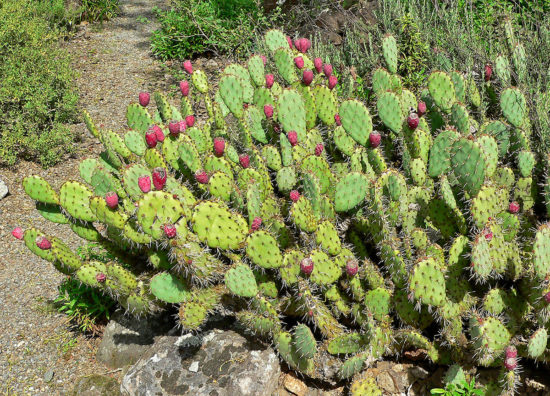The prickly pear cactus is such a powerful symbol in Mexico that they put it smack in the middle of the national flag.
It was considered sacred by the ancient Aztecs, and modern-day Mexicans eat it, drink it, and even use it in medicines and shampoos.
Now scientists have come up with a new use for the bright green plant: producing renewable energy.
Instantly recognizable with its jumble of spiny discs—its bright red fruit protruding like fat fingers from each one—the prickly pear cactus is farmed on a massive scale in Mexico.
Its soft inner flesh plays a starring role in a plethora of favorite national dishes: tacos, soups, salads, jams and even candies.
Believed by some to have healing powers, the cactus is also used in blood pressure medications, anti-hair loss shampoos, skin creams and diet juices.
“Since before the Spanish conquistadors arrived, we have eaten prickly pear cactus. It’s our tradition and our culture,” said Israel Vazquez, who has farmed the cactus for the past 20 years on a small plot in Milpa Alta, a neighborhood on Mexico City’s south side.
The cactus’s thick outer layer, with all those spines, has always been a waste product—until researchers developed a biogas generator to turn it into electricity.
Straight to the source
The pilot project was launched in May at Milpa Alta’s sprawling cactus market.
The far-flung neighborhood is a splash of green amid the smog and concrete of this Latin American mega-city, thanks in part to its more than 2,800 hectares (some 7,000 acres) of fields of prickly pear cactus, known in Spanish as “nopal.”
Farmers in straw sombreros trickle into these fields every morning at dawn to work the long rows of cactus that flow from the lower flanks of the dormant Teuhtli volcano.
The area produces 200,000 tons a year of prickly pear cactus—up to 10 tons of which ends up as waste on the floor of the cactus market each day.
A local green energy start-up called Energy and Environmental Sustainability—Suema, by its Spanish acronym—got the idea to develop a biogas generator to turn that waste into energy.
They decided to build it right at the source: the bustling cactus market, where hundreds of workers start each day by cleaning up the waste left from the day before.
To read complete article click here.
Source: Agence France Press


